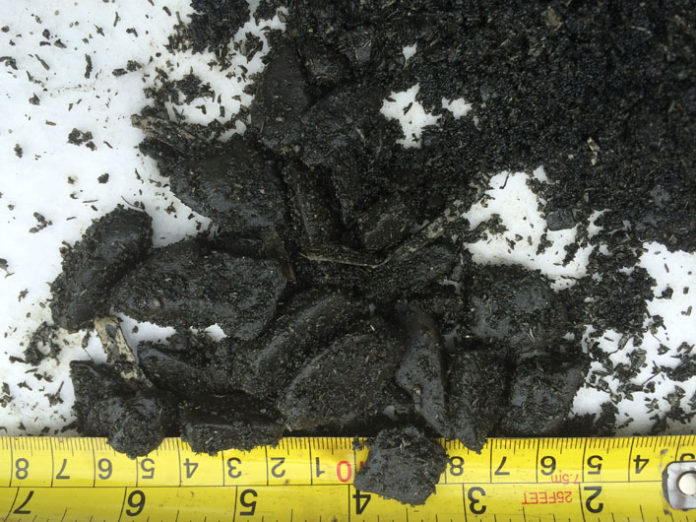There are several physical properties that can be used to describe and characterize reservoir rock.
The most common oil and gas reservoir rock types are sandstone, shale, dolomite, limestone, and siltstone.
Porosity
In simple terms, porosity is the amount of void space available in the rock between the rock particles in comparison to the total volume of the rock.
The volume of the stored formation fluids is directly proportional to the porosity of the rock.
Total (absolute) porosity – calculated by dividing the pore volume (void space) by the bulk volume of the rock.

Pore volume is equal to bulk volume minus the grain volume of the rock.
However, because not all the pores are interconnected some hydrocarbons can be trapped.
That’s why it is important to have a second way to describe porosity that takes into account only interconnected pores.
Effective porosity – is calculated by dividing the interconnected pore volume by the total bulk volume of the rock.
The porosity of the formation is usually calculated either by performing coring and then analyzing the rock or by running logging tools and then calculating porosity based on the logging data.
Related: What is Mud Logging in Oil and Gas?
Permeability
Permeability describes how easily the fluids can flow through the rock.
Permeability is measured in Darcy’s and Darcy’s law is used to describe the permeability of the rock.

- q – flowrate
- k – permeability
- A – cross-sectional area
- p – pressure
- L – length
- μ – viscosity
Absolute permeability – describes how a single fluid flows through the reservoir rock. This assumes that there is only one type of fluid in the reservoir.
Effective permeability – describes the flow of a particular fluid in the rock when there is another fluid present. For example, describing how oil flows through the rock when there are both oil and water in the reservoir.
Relative permeability – describes the ratio between effective permeability and absolute permeability.
Permeability can be measured in the lab from core samples or during well testing.
Related: What is Crude Oil Made Of?
Capillary Forces
The pressure difference between two fluids in the pores.
Capillary force is equal to the pressure of non-wetting fluid minus the pressure of the wetting phase.
Rock Compressibility
Describes how the rock volume is affected by changes in pressure.
Knowing the compressibility of the rock is important for material balance calculations that are performed to determine the volume of the original fluids in place.
The compressibility of the rock sample can be measured in the lab by compressing it and measuring the change in volume of the rock.
Surface Tension
Describes the interface forces between two immiscible fluids in the mixture.
Fluid Saturation
Describes the volume of a particular fluid in comparison to the total pore volume.
Wettability
Describes how the fluids behave on the surface of the rock.
One fluid might have a much higher preference to adhere to the rock than another fluid.
Formations are usually water-wet, oil-wet, or intermediate-wet.
Read next: What Do Reservoir Engineers Do in the Oil and Gas Industry?
References:
https://en.wikipedia.org/wiki/Capillary_pressure
